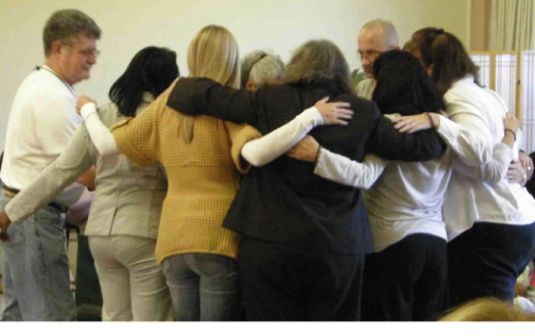It's not all on them. Yes, the VA is broken. Yes, it's a paranoid system where the Secretary's right hand man undermines the boss's directives, calling them just "politics" to the top brass. Where a facility is instructed by its manager in tactics to avoid getting on "the bad boy list." Where bright devoted mental health practitioners are made to feel crazy, as if in "an alternate universe." Where innovative evidence-based programs for veterans and families are eschewed for fear of "getting in trouble" with congressional legislators who prefer their own unproven favorites for reasons we can imagine. Yes, the VA needs a major renovation. And another; and another.
But it's not all on the VA. There's plenty of blame to go around. For the sake of real change, not the blame game, let's call it responsibility.
Our leader and his advisors got us into two major wars with no exit strategy and no plan for how to pay for them. They were brashly clueless about the inevitable massive costs to a nation, its veterans and their families. The VA, focusing on its older and aging veterans, was totally unprepared for the deluge of veterans needing care and benefits. VA was asked to do more with less. That would create conditions for resentment toward politicians in the Congress and the Executive, no matter the employees' views about the wars themselves. That would contribute to a sense of powerlessness and futility, and to low morale.
How about Congress? What was their role? Did they really do their due diligence before signing off? How do they feel now after being lied to repeatedly about the rational for going to war? How about the decorated cabinet member who to this day feels the sting of having been given doctored information to publicly make the case for war? How about we the people, the citizens of the United States? We elected and supported these leaders. Only 1% served and 99% did not. Some claimed the wars were "not in our name." But we are all implicated.
And we haven't even yet mentioned the millions of service members, veterans, immediate and extended family members, who believed in the mission who sacrificed so much and continue to, to the present day and beyond.
Dysfunction like the current VA scandal does not come about in a vacuum. It is not an "isolated case." It is connected to other kinds of dysfunction within and outside the VA. We must all realize and stand up and be accountable for these twelve years of car and their costs.
I have worked for forty years with trauma survivors, the last eight of them with thousands of Iraq and Afghanistan veterans, service members, families, caregivers and service providers. If I've learned one thing it is this:
The first casualty of war trauma is the connective tissue that links body, mind and soul. Our thinking, feeling and being are compromised. But the shockwaves of war don't stop at the individual; they spread instantaneously, rippling out like the sonic reverberations of an IED, impacting connections among family members, the wellbeing of caregivers and professional service providers, and non-profit advocacy groups. Nor are leaders, congressional and executive, exempt. Why then would we think that the governmental entities responsible for implementing policy and providing care like VA and DoD -- from line staff to management on up to leadership -- would not also be left reeling from traumatic ripples? Why would we not factor that into their dysfunction, internal and interactive?
I remember presenting to the lead national behavioral health officer of a military branch about the Coming Home Project. She asked some good questions but overall was not at all encouraging. After she left the room, her aide told me and a board member: "The (branch) doesn't want to be seen as unable to take care of our own problems. Partnering with a nonprofit, even one with national recognition and a proven evidence-base would signify weakness and be bad for our reputation and funding." Do you think stigma stops with the veteran? Welcome to organizational stigma.
We are what we make of the cards we are dealt; our response to trauma is key. Let's hold the VA responsible; if the facts warrant, let accountability happen swiftly, the first steps in real reform. But let's not forget the big picture: it takes a village. Cosmetic change, a few heads rolling, the blame game; that's easy. We and our leaders are good at that. Real change? Not so good at that. It takes a village and it begins with you and me.
What can ordinary citizens do? Meet a vet, talk to a vet. To a sister, brother, mother, father, grandma, grandpa, child or teenager of a vet. Develop cultural competency. Share stories of vets and families, don't leave out military kids. Vets are a marginalized population; live your multiculturalism. Learn about the extensive costs of war by human to human community-building. Put aside ideology and make contact with real folks. Create civilian-veteran dialogues where you are. Through heartfelt conversation and art, the awful divide between the 1 percent of those who served over the past 12 years and the rest of us can be bridged. Make common cause. Help build social support networks based on forged affinity, a proven -- and radical -- alternative to the some of the existing compartmentalized, medical model approaches. Link up with interfaith groups working to raise consciousness about the moral and spiritual injuries of war. As my Army Colonel / Commander / Social Worker buddy David likes to say: Isolation Kills and Community Heals.


